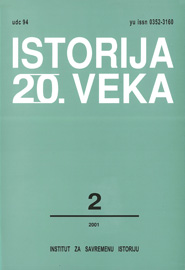TITOVO PUTOVANJE U INDIJU I BURMU 1954 - 1955. I OBLIKOVANJE JUGOSLOVENSKE POLITIKE NESVRSTANOSTI
TITO’S VISIT TO INDIA AND BURMA 1954 - 1955 AND THE SHAPING OF YUGOSLAVIA’S NONALIGNMENT POLICY
Author(s): Dragan BogetićSubject(s): Diplomatic history, Political history, Recent History (1900 till today), Post-War period (1950 - 1989)
Published by: Institut za savremenu istoriju, Beograd
Keywords: India; Burma; Josip Broz Titio; postwar period; Yugoslavia; politics; nonalignment policy;
Summary/Abstract: A particularly important element in forming Yugoslavia’s new course in foreign policy and the political platform on which it was based was Tito’s trip to India and Burma, the Asian countries which had already applied in practice the policy founded on the principles of coexistence and long supported the establishment of international premises which would later become the essence of the nonalignment policy. Personal contacts with Indian and Burmese politicians and the meeting with the Egyptian president Nasser on their return to Yugoslavia, broadened the Yugoslav leaders’ views of the world beyond Europe and America, which had previously remained outside the scope of Yugoslavia’s foreign affairs. This experience helped to give a new incentive and to strengthen the basis of a new idea gradually maturing in leading Yugoslav political circles. The realization of this idea would place Yugoslavia at the forefront of a large group of countries with impressive voting leverage in the United Nations, in addition to allowing access to an entirely new and big market abroad.
Journal: Istorija 20. veka
- Issue Year: 2001
- Issue No: 2
- Page Range: 65-73
- Page Count: 9
- Language: Serbian

